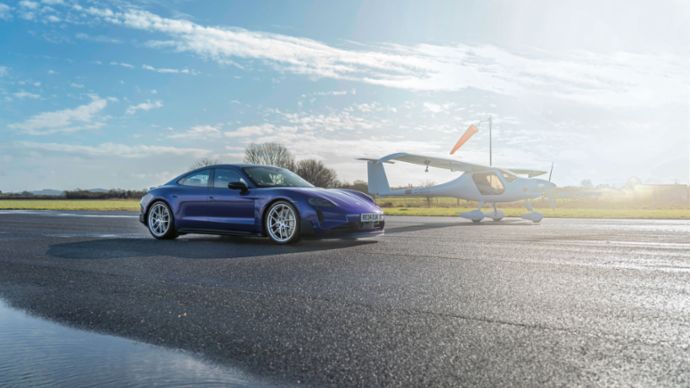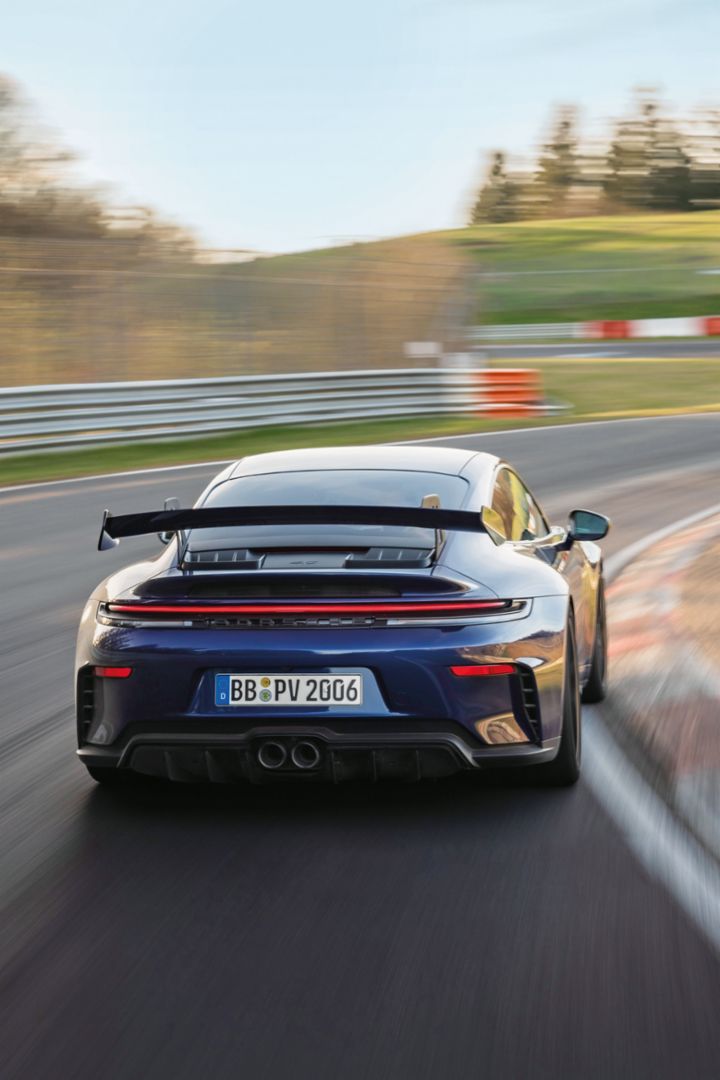Hyper real
The Porsche Mission X hypercar concept showcased for the first time down under.
The canon of Porsche hypercars is a trilogy of history-makers. The groundbreaking 959, Carrera GT and 918 Spyder introduced new technologies and performance levels so extreme they became three major plot points in the story of the sportscar.
In the case of the Porsche 959 of the mid 1980s, it was the electronically controlled all-wheel drive and twin-turbocharged performance that delivered a 317 km/h top speed and 0 to 100 km/h time of 3.7 seconds.
The arrival of the symphonic V10-powered Carrera GT in 2003 introduced a carbon-fibre monocoque, advanced aerodynamics and the ability to reach 330 km/h.

Driving ahead:
The Mission X concept is a spectacular reinterpretation of a hypercar.The 652 kW 918 Spyder of 2014 armed its 9,000 rpm 4.6-litre V8 with twin electric motors to deliver incredible acceleration (0 to 100 km/h in 2.6 seconds) and new racetrack records. It directly influenced the development of today’s Porsche 963 LMDh prototype racer.
Critically, this hybrid-powered rocket introduced electrification to this rarefied world of Porsche possibilities, opening the door for the next member of this guild.
The Mission X concept study is a spectacular reinterpretation of a hypercar. Unveiled in June 2023, this dramatic-looking two-seater is a beacon for the sportscar of the future. Its Le Mans-style doors and high-performance electric drivetrain signal its abilities. Its endless details mesmerise. For Porsche, it represents the pinnacle of performance and modern luxury.
“The Mission X concept points towards the future,” says Michael Behr, Project Manager for Mission X, during his first visit to Australia to exhibit the breathtaking one-off at this year’s Formula 1® Rolex Australian Grand Prix. “It takes the baton from the 918 Spyder, Carrera GT and 959. It’s a completely new concept and, like these three legendary cars, it is pure Porsche DNA.”
Porsche Cars Australia’s exhibition of the Mission X concept car stunned the more-than 452,000 people who visited this year’s Formula 1® event at Melbourne’s Albert Park. Housed inside a bespoke architectural box-like building, the Porsche Hypercar Gallery ushered guests through three separate discovery zones, each dedicated to the stories behind the original trio of Porsche hypercars. Guests were then welcomed to find the Mission X concept on display in the Gallery’s final room.

Outside the box:
The Porsche Hypercar Gallery.“Everybody was amazed,” says Michael, who previously worked on the Carrera GT and in the Porsche Motorsport department. “The styling was a hit and so many people wanted to know more about the car’s performance potential.”
The exhibition’s curated lighting display highlighted the Mission X concept’s aerodynamic shapes. Its lightweight glass dome and carbon-fibre exoskeleton captivated streams of visitors. The car’s colour, Rocket Metallic, an experimental paint finish, appeared almost liquid under the glow.
The car’s sculpted form and muscular lines show their Porsche origins. The 917K racer influenced the design of its doors and the sweeping line that runs from the nose to the rear wings. The 906 and 908 inspired the headlight clusters, which showcase a reinterpreted Porsche four-point graphic.

Eyes on the future:
The headlights showcase a reinterpreted Porsche four-point graphic.The elaborate wheel design incorporates transparent aeroblades to enhance brake cooling. The Mission X also debuts the modernised Porsche crest. Even the car’s recharging function is built into its exterior styling: the letter “E” in the PORSCHE script across the rear flashes when charging.
Inside, the Misson X is tailored around the driver, with carbon-fibre-reinforced plastic (CFRP) seat shells integrated within the car’s monocoque structure. The open-top steering wheel clears the view to the curved instrument cluster.
The car’s “e-core layout” concentrates its main masses at the centre like a mid-engine car. For example, the battery for the 900-volt electrical architecture is situated behind the seats.
The Mission X radiates details. Its smallest highlights are the most fascinating. One of them can be found just in front of the rear wheels: a small motif of a cheetah, the world’s fastest land animal.

X marks the future:
The Mission X in the Porsche Hypercar Gallery.“These small illustrations are hidden on a number of our concept cars. They help reveal their stories.”
But there is one even smaller detail dotted around the Mission X that is only visible to the trained eye.
Michael Behr: “On many of its parts are small labels with a code that signal they meet the rigorous requirements within CAD (computer-aided design) at Porsche. That reveals how accurate its component parts are.”
Does that mean it might become a production car one day?
“Only time will tell,” he says. “For now, the Mission X concept might be a show car but it can be driven, which means it passes the Porsche DNA test with flying colours.”
Consumption data
911 GT3
Taycan Turbo GT
-
21.2 – 20.5 kWh/100 km
-
0 g/km
-
A Class




